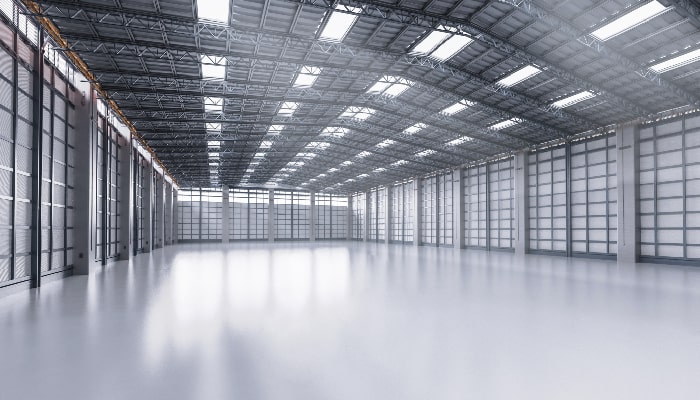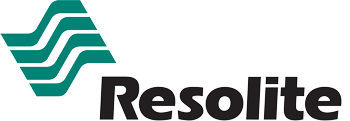In today’s competitive market, owners and contractors are under more pressure than ever to find smart, reliable ways to reduce construction costs without sacrificing safety, quality or long-term performance. The good news is that modern materials and technologies make that balance possible.
The world of construction is as much about controlling costs as it is about bricks, concrete and steel. Budgets—carefully crafted around market conditions, client expectations and financial forecasts—act as the guiding star for every project. Straying too far from that financial compass can stall work, damage reputations and put future opportunities at risk.
A company’s track record of delivering projects on time and on budget is one of its greatest assets. Clients aren’t just investing capital; they’re investing ambitions, long-term plans and often their life savings. Demonstrating that you know the most effective ways to reduce construction costs while maintaining quality helps build trust—and that trust becomes a powerful differentiator in a volatile global economy.
Economic shifts, material price volatility and labor shortages add extra complexity. In this context, true cost control is not just a defensive tactic—it’s a strategic capability. It encourages innovation, new methods and the adoption of advanced materials that open up more ways to reduce construction costs across the entire life cycle of a building.
Modern materials such as fiberglass-reinforced plastic (FRP) and polycarbonate are at the center of these changes. They help contractors reduce initial construction costs, improve energy efficiency and lower long-term maintenance expenses. In this article, we’ll explore six ways to reduce construction costs using modern technologies, with a particular focus on solutions from Stabilit America and its brands.
Every construction project begins with a vision—what a space could become and how it will be used. But that vision is always paired with the reality of a budget. To protect both, builders are increasingly turning to smarter ways to reduce construction costs, starting with their choice of materials.
Modern composite and thermoplastic solutions enable:
- Lower structural loads thanks to lighter materials
- Faster installation and reduced labor costs
- Better durability in demanding environments
- Improved thermal and acoustic performance
By choosing the right combination of FRP and polycarbonate systems, it’s possible to control upfront costs while also reducing long-term operating expenses, which is one of the most sustainable ways to reduce construction costs over the life of a building.
1. Fiberglass Reinforced Plastic (FRP)
Fiberglass Reinforced Plastic (FRP) panels are composite materials made by combining fine glass fibers with a polymer matrix, usually a resin. The result is a lightweight yet extremely durable material with high resistance to corrosion, moisture and impact.
From a cost-control standpoint, FRP is one of the most powerful ways to reduce construction costs because it delivers:
- Lightness: Reduced structural demands and lower transportation costs
- Durability: Less frequent repairs and replacements
- Hygiene and cleanability: Lower cleaning and maintenance effort in sanitary environments
- Corrosion resistance: Longer life in aggressive atmospheres (chemical, coastal, industrial)
FRP panels are widely used for:
- Walls and ceilings in food processing plants
- Cleanable, sanitary surfaces in healthcare facilities
- Corrosion-resistant roofs and cladding in industrial and agricultural buildings
Their non-porous nature and ability to withstand a wide range of environmental conditions make FRP one of the most practical, real-world ways to reduce construction costs and lifetime ownership costs.
Glasteel: The Synthesis of Durability and Versatility
Glasteel, a leading manufacturer under the Stabilit America umbrella, offers a wide range of FRP, polycarbonate and PVC panels. These solutions are tailored for:
- Indoor and outdoor applications
- Sanitary and high-moisture environments
- Impact- and corrosion-prone areas
The durability of Glasteel’s products ensures a long service life, reducing the frequency of replacements and the labor costs associated with shutdowns and repairs—another key way to reduce construction costs.
Resolite: The Vanguard of FRP Products
Resolite, a business unit of Stabilit America established in 1951, is a recognized pioneer in FRP technology. Resolite’s FRP panels are synonymous with:
- High performance in industrial roof and wall construction
- Proven resistance to chemicals, UV and harsh weather
- Long-term reliability in demanding industrial settings
By choosing FRP solutions from Glasteel and Resolite, project teams tap into proven, field-tested ways to reduce construction costs while improving reliability and safety.
2. Polycarbonate: The Transparent Marvel
Polycarbonate, a versatile thermoplastic, has become a game-changer in modern construction and one of the most effective ways to reduce construction costs related to lighting, energy and maintenance.
Key cost-saving advantages of polycarbonate:
- Lightweight: Reduces transportation and handling costs, and can lower structural requirements.
- Durable and impact-resistant: Less prone to breakage compared to glass; fewer replacements.
- UV and weather resistance: Long-term clarity and performance under sun, rain and temperature changes.
- Thermal insulation (especially in multiwall systems): Reduces heating and cooling loads.
- High light transmission: Allows natural daylight in, cutting artificial lighting costs during the day.
When used in roofing, skylights or cladding, polycarbonate panels are a practical way to reduce construction costs not just during construction, but also throughout the building’s operational life.
Macrolux USA: Pioneering Polycarbonate Solutions
Macrolux USA, another subsidiary of Stabilit America, specializes in high-strength polycarbonate panels available in various:
- Colors and thicknesses
- Configurations (solid, corrugated, multiwall)
- Light transmission and solar heat-gain profiles
Polycarbonate panels from Macrolux USA, particularly the multi-wall variety, offer:
- Excellent insulation, reducing energy consumption
- High impact resistance, improving safety and durability
- Optimized natural light, decreasing dependence on artificial lighting
All of these benefits make Macrolux USA systems one of the most flexible and technically advanced ways to reduce construction costs in both new builds and retrofit projects.
3. Sustainability: An Investment in the Future
Sometimes, discovering the best ways to reduce construction costs means looking beyond the initial invoice and focusing on the entire life cycle of a building.
Modern FRP and polycarbonate materials contribute to sustainability in several ways:
- Lower embodied energy in some formulations compared to traditional materials such as certain metals or masonry systems.
- Improved energy efficiency by enhancing insulation and daylighting, which reduces heating, cooling and lighting demands.
- Extended service life, meaning fewer replacements and less material sent to landfills.
As environmental performance becomes a measurable “cost” in many projects—from ESG reporting to compliance and tax incentives—using FRP and polycarbonate systems becomes both a technical and financial way to reduce construction costs over time.
4. Reduced Maintenance Costs
One of the most overlooked ways to reduce construction costs is to design for low maintenance from day one.
Traditional materials may require:
- Regular repainting or sealing
- Rust treatment and corrosion control
- Repairs due to cracking, warping or moisture damage
By contrast, modern materials such as FRP and polycarbonate are inherently resistant to:
- Corrosion and rust
- UV degradation (with proper stabilization)
- Many common chemicals used in industrial and sanitary cleaning
- Moisture absorption and rot
The result is:
- Less frequent maintenance interventions
- Reduced downtime for operations
- Lower long-term expenditure on labor, coatings and replacement parts
Considering maintenance as a strategic factor is one of the smartest ways to reduce construction costs throughout the building’s life.
5. Streamlined Construction Process
The lightweight nature of FRP and polycarbonate materials simplifies many aspects of construction:
- Transportation: More square footage per truck, lower fuel costs.
- Handling: Easier manual handling, reduced need for heavy lifting equipment.
- Installation: Faster installation, fewer crew members, simpler tools.
These advantages lead to:
- Shorter schedules, which translates into savings on labor and equipment rental
- Reduced risk of delays due to complex logistics
- Simplified installation on existing structures, making retrofit and expansion projects more efficient
Using modern materials to streamline installation is one of the most direct ways to reduce construction costs during the execution phase of a project.
6. Enhanced Safety and Reduced Liabilities
Safety has a direct and indirect impact on project cost. Modern materials improve safety in several ways:
- Polycarbonate is highly impact-resistant, reducing the risk of shattering and injuries compared to glass.
- Many FRP products offer significant fire-resistant or fire-retardant properties, helping to slow or prevent the spread of fire.
- Lightweight systems reduce the risk of manual handling injuries on site.
Enhanced safety contributes to:
- Fewer accidents and related delays
- Potential reductions in insurance premiums and liabilities
- A better work environment and improved morale
Incorporating safety-enhancing materials is not only good practice—it is also one of the most strategic ways to reduce construction costs related to risk and liability.

The construction industry is at a pivotal moment
Modern materials and technologies offer multiple ways to reduce construction costs while improving quality, durability and sustainability.
By embracing solutions such as:
- FRP systems from Glasteel and Resolite
- Polycarbonate systems from Macrolux USA
contractors and builders can:
- Lower initial material and installation costs
- Enhance energy efficiency and reduce operational expenses
- Cut maintenance and replacement costs
- Improve safety and reduce risks
These are not isolated improvements; they’re part of a larger shift toward smarter, more efficient construction practices. As the industry continues to evolve, FRP and polycarbonate systems will remain central to the most effective ways to reduce construction costs across project portfolios.
Stabilit Is Your Partner for Efficient Construction
Combining advanced technology with an obsessive attention to quality, Stabilit America delivers products that offer:
- Outstanding performance and aesthetics
- A strong cost-benefit ratio
- Real, measurable ways to reduce construction costs in industrial, commercial, agricultural and transportation projects
From FRP panels to polycarbonate sheets, Stabilit’s solutions are designed to integrate seamlessly into modern construction systems, helping you build projects that are efficient, durable and economically sound.
Stabilit wants to help you succeed. Contact us and find out more about how we can support your next project with smarter ways to reduce construction costs.
FAQs About Ways to Reduce Construction Costs Using Modern Technologies
1. What are the most effective ways to reduce construction costs with materials?
Some of the most effective ways to reduce construction costs with materials include:
- Using FRP panels for corrosion-resistant, easy-to-clean walls and roofs
- Installing polycarbonate skylights and cladding to reduce structural weight and improve daylighting
- Choosing systems that offer long-term durability, which lowers maintenance and replacement costs
These strategies help control both upfront and life-cycle costs.
2. How do FRP panels help reduce construction costs?
FRP panels contribute to ways to reduce construction costs by:
- Being lightweight, which simplifies handling and reduces structural demands
- Offering high durability and chemical resistance, cutting maintenance and replacement expenses
- Providing hygienic, easy-to-clean surfaces, especially valuable in food and healthcare settings
This combination makes FRP a cost-effective choice for many industrial and commercial projects.
3. In what ways does polycarbonate reduce construction and operating costs?
Polycarbonate supports ways to reduce construction costs by:
- Reducing transport and installation time due to its light weight
- Providing impact resistance and UV stability, which extends service life
- Improving thermal performance (in multiwall systems), lowering heating and cooling costs
- Allowing natural light into buildings, which reduces the need for artificial lighting
Together, these factors reduce both construction and long-term operating expenses.
4. Are modern materials like FRP and polycarbonate suitable for retrofits?
Yes. Using FRP and polycarbonate in retrofit projects is one of the most practical ways to reduce construction costs because:
- They can be installed over many existing substrates
- Their light weight helps avoid major structural reinforcement
- They quickly improve performance (hygiene, daylighting, thermal comfort) with minimal disruption
This makes them ideal for upgrading aging facilities in a cost-efficient way.
5. How can I identify the best ways to reduce construction costs for my specific project?
Start by analyzing:
- Environmental conditions (corrosion, UV, temperature)
- Performance requirements (hygiene, fire resistance, insulation)
- Budget and life-cycle cost targets
Then, evaluate which combination of FRP and polycarbonate systems from providers like Glasteel, Resolite and Macrolux USA aligns with those needs. Consulting with Stabilit America’s technical team can help you pinpoint the most effective ways to reduce construction costs tailored to your project.
Stabilit America Inc. is a leading North American manufacturer of fiberglass reinforced panels (FRP) and polycarbonate sheets, with over 65 years of experience. The company offers the widest range of acrylic, polyester, and polycarbonate laminates, backed by international certifications (USDA, Greenguard, FM, ISO 9001, among others), serving industries such as industrial construction, transportation, and sustainable building.


